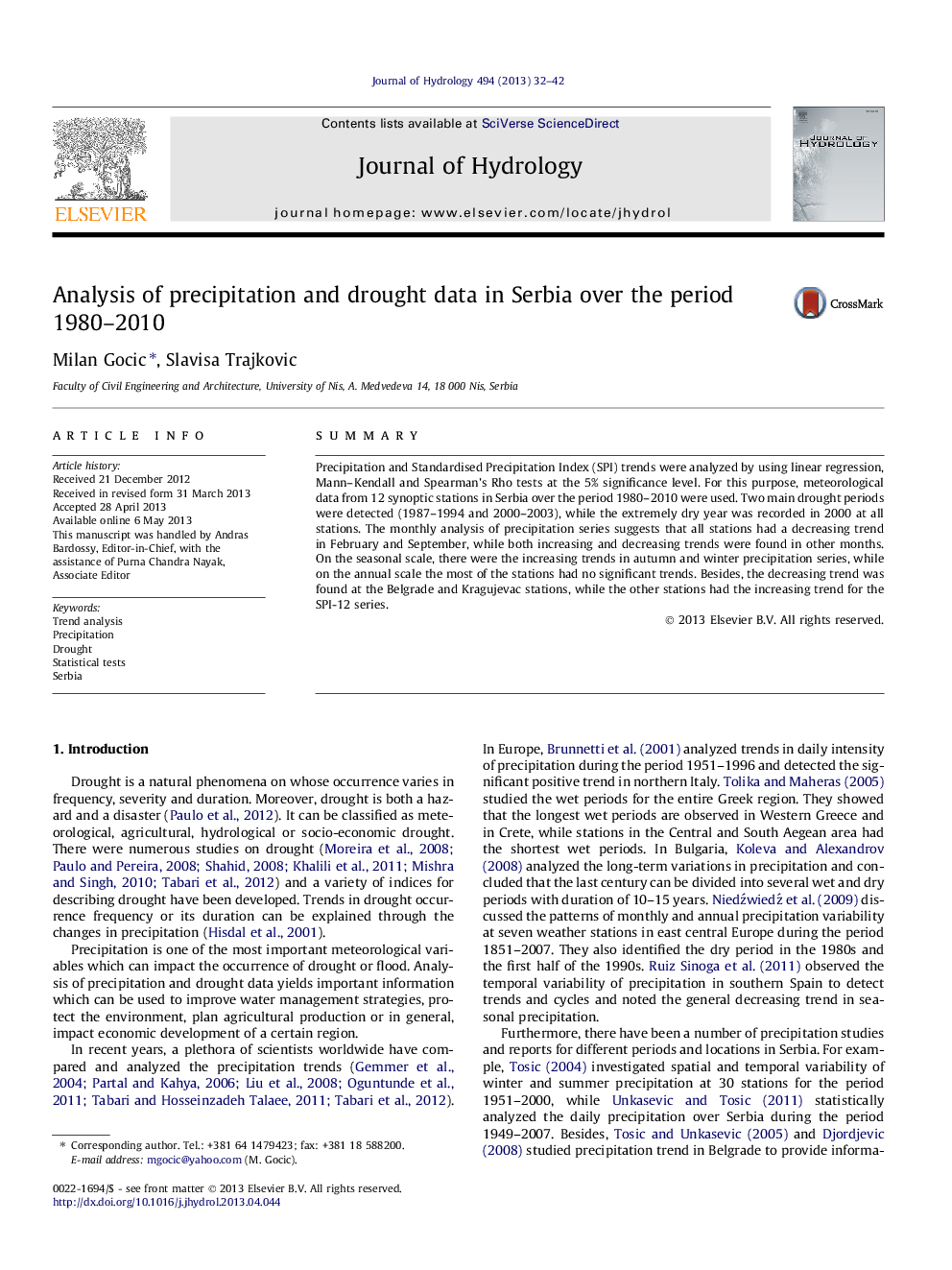| Article ID | Journal | Published Year | Pages | File Type |
|---|---|---|---|---|
| 6413756 | Journal of Hydrology | 2013 | 11 Pages |
â¢Two periods (1987-1994; 2000-2003) were characterized by long and severe droughts.â¢The 2000 year was the driest year during the observed period.â¢The significant increasing trend was at Negotin in spring and at Novi Sad in autumn.â¢The significant increasing trend in annual precipitation data was detected at Sombor.â¢No significant trend was detected in the SPI-12 series at the 5% significance level.
SummaryPrecipitation and Standardised Precipitation Index (SPI) trends were analyzed by using linear regression, Mann-Kendall and Spearman's Rho tests at the 5% significance level. For this purpose, meteorological data from 12 synoptic stations in Serbia over the period 1980-2010 were used. Two main drought periods were detected (1987-1994 and 2000-2003), while the extremely dry year was recorded in 2000 at all stations. The monthly analysis of precipitation series suggests that all stations had a decreasing trend in February and September, while both increasing and decreasing trends were found in other months. On the seasonal scale, there were the increasing trends in autumn and winter precipitation series, while on the annual scale the most of the stations had no significant trends. Besides, the decreasing trend was found at the Belgrade and Kragujevac stations, while the other stations had the increasing trend for the SPI-12 series.
